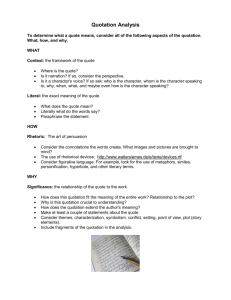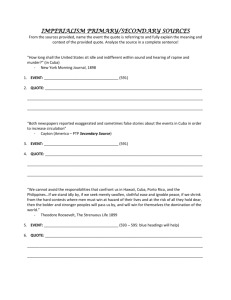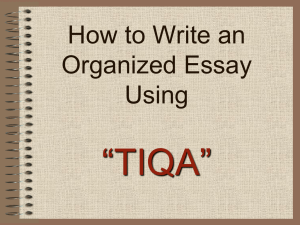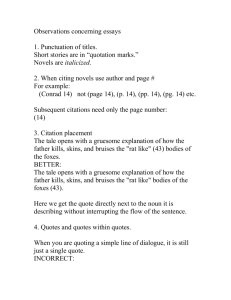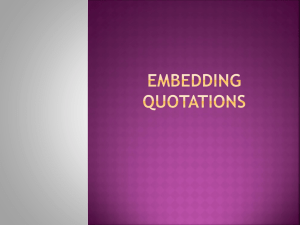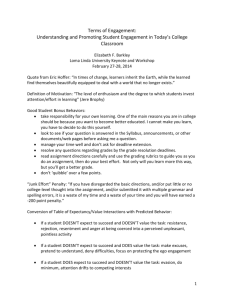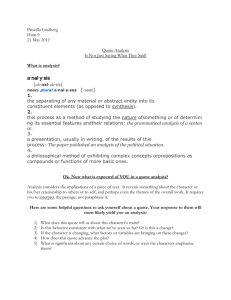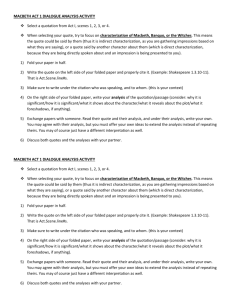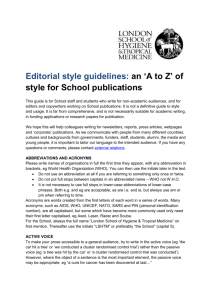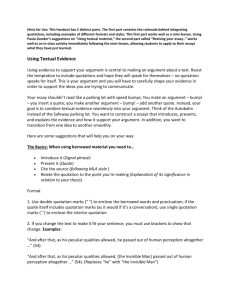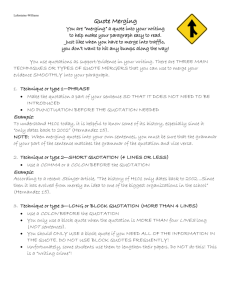Non Plop Short and Sweet Quotes
advertisement
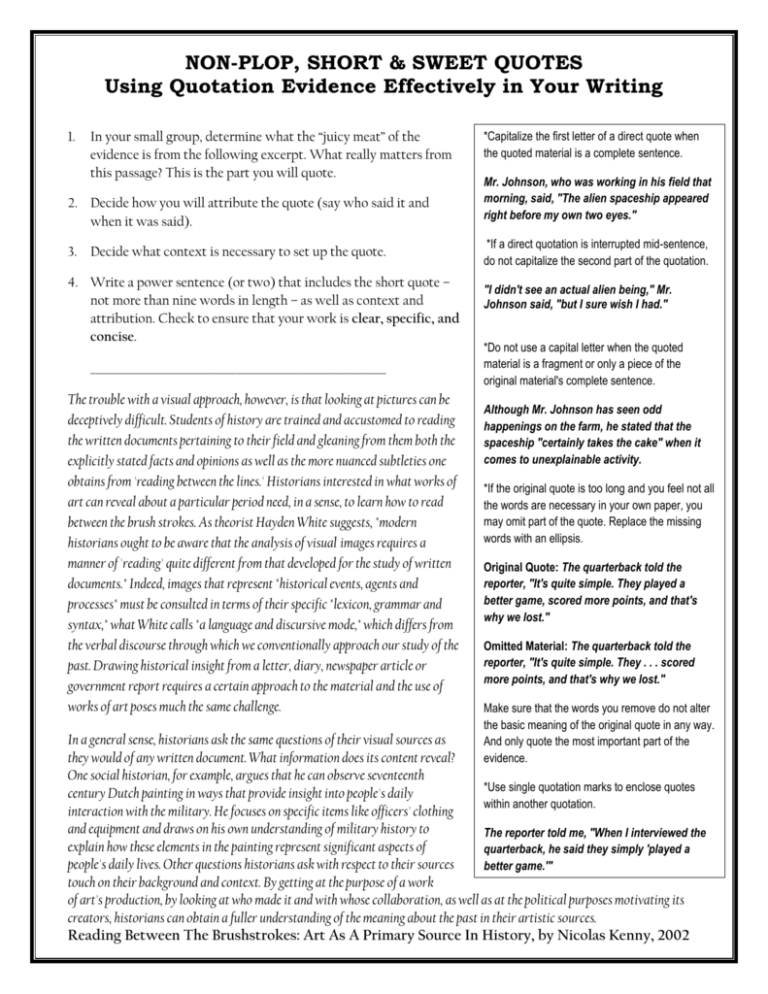
NON-PLOP, SHORT & SWEET QUOTES Using Quotation Evidence Effectively in Your Writing 1. In your small group, determine what the “juicy meat” of the evidence is from the following excerpt. What really matters from this passage? This is the part you will quote. 2. Decide how you will attribute the quote (say who said it and when it was said). 3. Decide what context is necessary to set up the quote. 4. Write a power sentence (or two) that includes the short quote – not more than nine words in length – as well as context and attribution. Check to ensure that your work is clear, specific, and concise. _________________________________________________________ The trouble with a visual approach, however, is that looking at pictures can be deceptively difficult. Students of history are trained and accustomed to reading the written documents pertaining to their field and gleaning from them both the explicitly stated facts and opinions as well as the more nuanced subtleties one obtains from 'reading between the lines.' Historians interested in what works of art can reveal about a particular period need, in a sense, to learn how to read between the brush strokes. As theorist Hayden White suggests, "modern historians ought to be aware that the analysis of visual images requires a manner of 'reading' quite different from that developed for the study of written documents." Indeed, images that represent "historical events, agents and processes" must be consulted in terms of their specific "lexicon, grammar and syntax," what White calls "a language and discursive mode," which differs from the verbal discourse through which we conventionally approach our study of the past. Drawing historical insight from a letter, diary, newspaper article or government report requires a certain approach to the material and the use of works of art poses much the same challenge. *Capitalize the first letter of a direct quote when the quoted material is a complete sentence. Mr. Johnson, who was working in his field that morning, said, "The alien spaceship appeared right before my own two eyes." *If a direct quotation is interrupted mid-sentence, do not capitalize the second part of the quotation. "I didn't see an actual alien being," Mr. Johnson said, "but I sure wish I had." *Do not use a capital letter when the quoted material is a fragment or only a piece of the original material's complete sentence. Although Mr. Johnson has seen odd happenings on the farm, he stated that the spaceship "certainly takes the cake" when it comes to unexplainable activity. *If the original quote is too long and you feel not all the words are necessary in your own paper, you may omit part of the quote. Replace the missing words with an ellipsis. Original Quote: The quarterback told the reporter, "It's quite simple. They played a better game, scored more points, and that's why we lost." Omitted Material: The quarterback told the reporter, "It's quite simple. They . . . scored more points, and that's why we lost." Make sure that the words you remove do not alter the basic meaning of the original quote in any way. And only quote the most important part of the evidence. In a general sense, historians ask the same questions of their visual sources as they would of any written document. What information does its content reveal? One social historian, for example, argues that he can observe seventeenth *Use single quotation marks to enclose quotes century Dutch painting in ways that provide insight into people's daily within another quotation. interaction with the military. He focuses on specific items like officers' clothing and equipment and draws on his own understanding of military history to The reporter told me, "When I interviewed the explain how these elements in the painting represent significant aspects of quarterback, he said they simply 'played a people's daily lives. Other questions historians ask with respect to their sources better game.'" touch on their background and context. By getting at the purpose of a work of art's production, by looking at who made it and with whose collaboration, as well as at the political purposes motivating its creators, historians can obtain a fuller understanding of the meaning about the past in their artistic sources. Reading Between The Brushstrokes: Art As A Primary Source In History, by Nicolas Kenny, 2002

